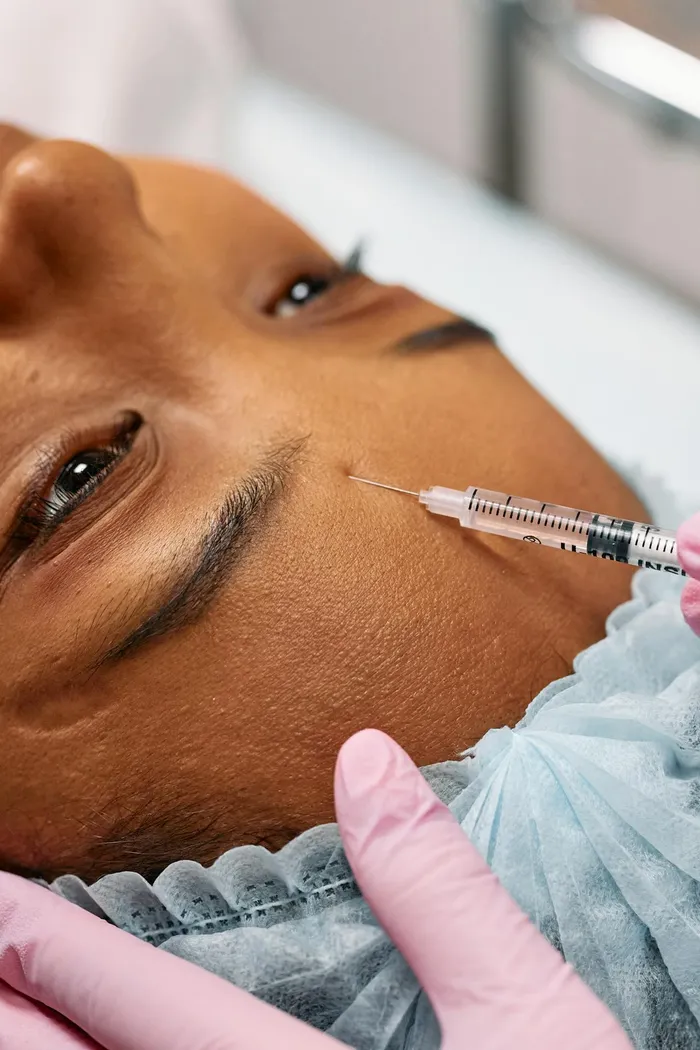The rise of 'Botox resistance': how it affects your skin and treatment options

Botox resistance explained: Why your treatments may not be working
Image: cottonbro studio /Pexels
Botox can feel a bit magical. With just a few small injections, frown lines soften, crow’s feet fade, and you look more refreshed, almost as if you finally got a good night’s sleep.
But what happens when that magic starts to wear off, not because of time, but because your body simply stops responding?
Welcome to the new conversation in aesthetic medicine: Botox resistance is a growing concern among long-term users of the world’s most popular cosmetic treatment.
So, what exactly is Botox resistance?
Since its debut in 1989, Botox has revolutionised cosmetic dermatology. It works by temporarily relaxing specific facial muscles to smooth out expression-based wrinkles.
However, for a small group of patients, approximately 1–3%, according to research, the results begin to fade more rapidly or disappear altogether.
This happens when the body creates antibodies that block the botulinum toxin. In other words, your immune system sees the treatment as something to fight off, so future sessions don’t work as well.
“Resistance typically shows up as one of three things: a shorter duration of effect, weaker muscle relaxation, or complete treatment failure,” explains Dr Alek Nikolic, a leading aesthetic practitioner who has performed more than 25,000 Botox procedures.
“Understanding these mechanisms is key to maintaining long-term success.”

Botox resistance a growing concern
Image: Jonathan Borba/Pexels
Causes of Botox resistance
Botox resistance doesn’t just appear out of nowhere. It’s often linked to how often and how much Botox you get, as well as who administers it.
Injecting too many times: Getting injections too frequently, say, every two months instead of every three to six, can increase your risk, explains Dr Nikolic.
“High doses and repeated exposure over time can also trigger an immune response.”
Injector experience: There’s also the issue of injector experience: A practitioner who misses the target muscle or uses incorrect dosing may leave patients feeling like their Botox “didn’t work.”
Counterfeit product: And while it’s tempting to look for a bargain, fake or over-diluted Botox can lead to underwhelming or even dangerous results. Only licensed medical professionals should perform these procedures.
Signs of Botox resistance
The initial indication of Botox resistance can be subtle; your results don’t last as long as they used to. Then, your facial lines start returning sooner, even when your treatment schedule hasn’t changed.

Clinical studies show that taking a treatment break (a “Botox holiday”) of four to five years can help neutralise antibodies fade, allowing the body to respond again
Image: cottonbro studio/Pexels
Eventually, you might notice no difference at all after an appointment, as if your face has built a quiet immunity.
“It can be emotionally frustrating,” says Nikolic. “Patients who have relied on Botox for years suddenly find their go-to solution isn’t giving them the same confidence boost.”
Managing and preventing Botox resistance
The good news? Resistance is rare, and there are ways to lower your risk.
Space out treatments: Wait at least three to six months between sessions to give your body time to reset.
Use the lowest effective dose: Bigger isn’t always better. A skilled injector knows how to balance results without overstimulating the immune system.
Avoid unnecessary “top-ups”: Resist the urge to book touch-ups too soon. Your results need time to develop.
Choose qualified professionals: Always check credentials and ensure you’re receiving authentic Botox.
If resistance does develop, all is not lost. “We can adapt our approach,” says Nikolic.
“Alternatives like dermal fillers, energy-based treatments, resurfacing procedures, and skin boosters can restore facial volume, improve texture, and soften lines. With a tailored plan, patients can still achieve great results.”
Can you reverse Botox resistance?
Yes, but it takes time and patience. Clinical studies show that taking a treatment break (a “Botox holiday”) of four to five years can help neutralise antibodies fade, allowing the body to respond again.
“This break gives the immune system time to reset,” says Nikolic. “It’s not a quick fix, but it’s an effective long-term strategy.”
Patients can also switch to purified formulations of newer versions of botulinum toxin that contain fewer accessory proteins and are less likely to trigger an immune response.
He adds, For many, Botox isn’t just about vanity, it’s about confidence, self-care, and feeling aligned with how they see themselves. So when treatments stop working, it can feel personal.
“When patients understand how resistance works, they can make smarter choices that protect both their immediate results and their long-term treatment options.”
Related Topics: